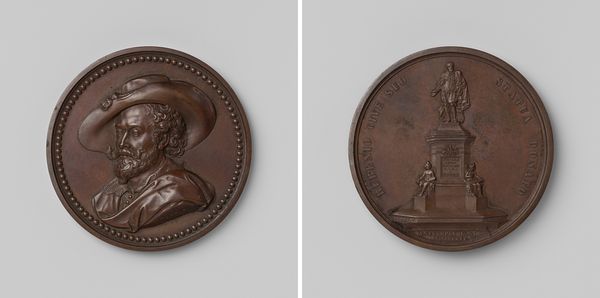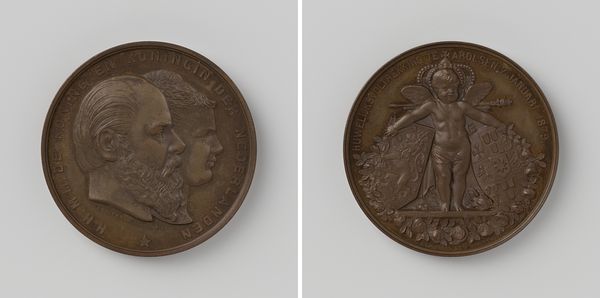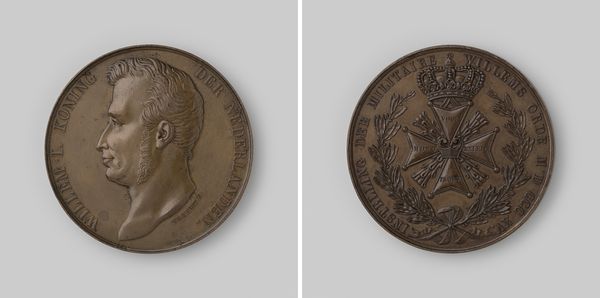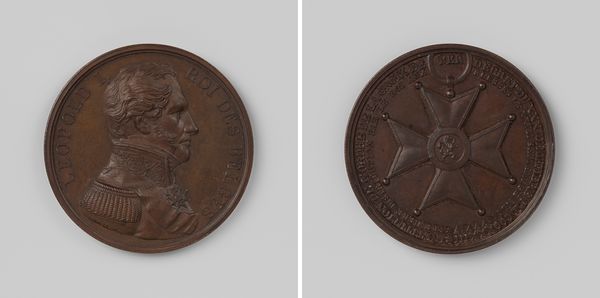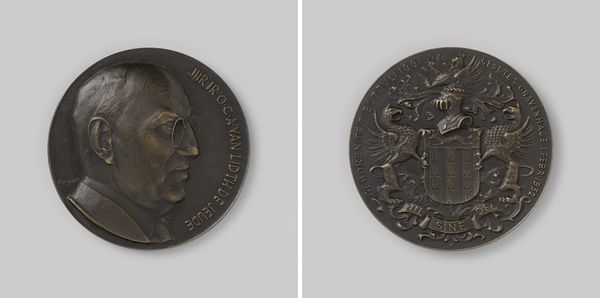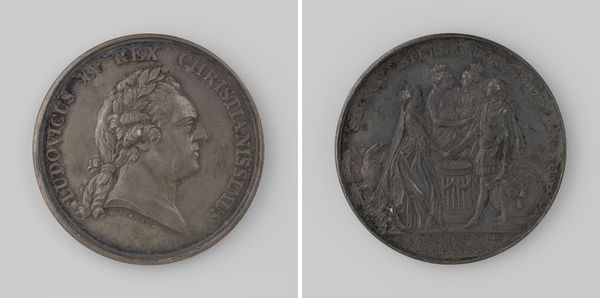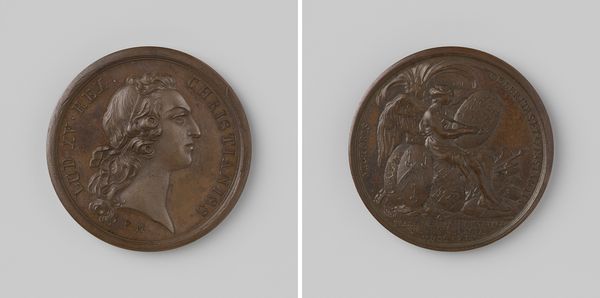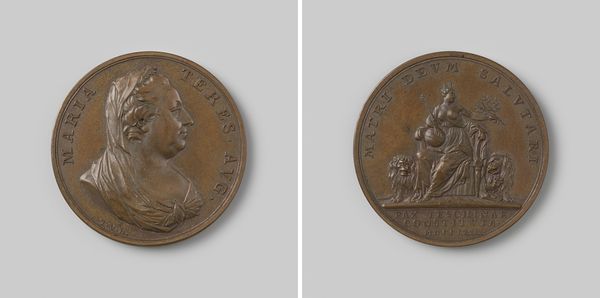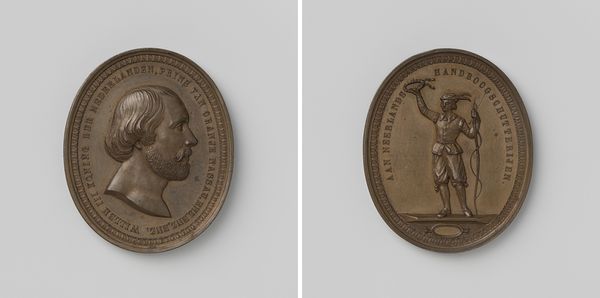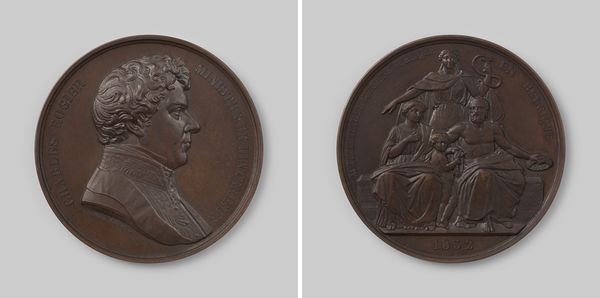
bronze, sculpture
#
portrait
#
neoclacissism
#
sculpture
#
bronze
#
sculpture
#
history-painting
#
statue
Dimensions: diameter 8 cm, weight 191.57 gr
Copyright: Rijks Museum: Open Domain
Curator: Leopold Wiener crafted this bronze piece in 1850, titled “Overlijden van Louisa Maria, koningin der Belgen"—"The Death of Louisa Maria, Queen of the Belgians." It presents as a rather formal medallion, doesn't it? Editor: My initial reaction is…melancholy. The bronze gives it a solemn, almost funereal feel. There's a strong sense of both public mourning and, perhaps, idealized remembrance embedded here. Curator: Absolutely. Consider the structure: we see a classical profile portrait on one side. It adheres to strict Neoclassical conventions—note the sharp, clean lines, the emphasis on idealized form. It communicates nobility, certainly. Editor: But the reverse side explodes with allegorical and symbolic density. Louisa Maria’s portrait is centrally framed, flanked by what appear to be personifications of grief and perhaps immortality? And what of the smaller portraits clustered below? Curator: Ah, there we observe a formal arrangement of dynastic significance: likely depictions of her children and perhaps King Leopold. Notice the balanced symmetry. The figures are rendered with minute detail. Editor: Right. They act almost like totems of family and legacy surrounding her central image. Bronze as a medium enhances the gravity, speaking to permanence—it's designed to last, both as a memento mori and as propaganda. It's very intentional. But those flanking winged figures feel very Roman…perhaps Winged Victory figures or mourning angels. It's clearly borrowing from a deep well of symbols of power, bereavement, and timelessness. Curator: The visual vocabulary is certainly potent. Each element contributes to a unified statement—order, permanence, legacy. Even the inscription is meticulously executed, creating a frame that enhances the composition. The texture contributes to its aesthetic, a calculated formal choice. Editor: Considering its creation soon after her death, the medal feels like an attempt to control the narrative, perhaps to establish her place in Belgian history and memory. There's a sense of carefully curated iconography at work. Curator: Indeed. Wiener skillfully blends technique and message to commemorate a queen. He orchestrates line, form, and texture into a controlled visual statement. It compels careful consideration of the elements. Editor: Precisely. And understanding the symbolic weight behind each choice makes us reconsider not just the subject, but how death and legacy were framed—literally and figuratively—in that historical moment. Curator: A moment now rendered into bronze for all time. Editor: Precisely, offering layered context. Thank you for elucidating its construction.
Comments
No comments
Be the first to comment and join the conversation on the ultimate creative platform.
